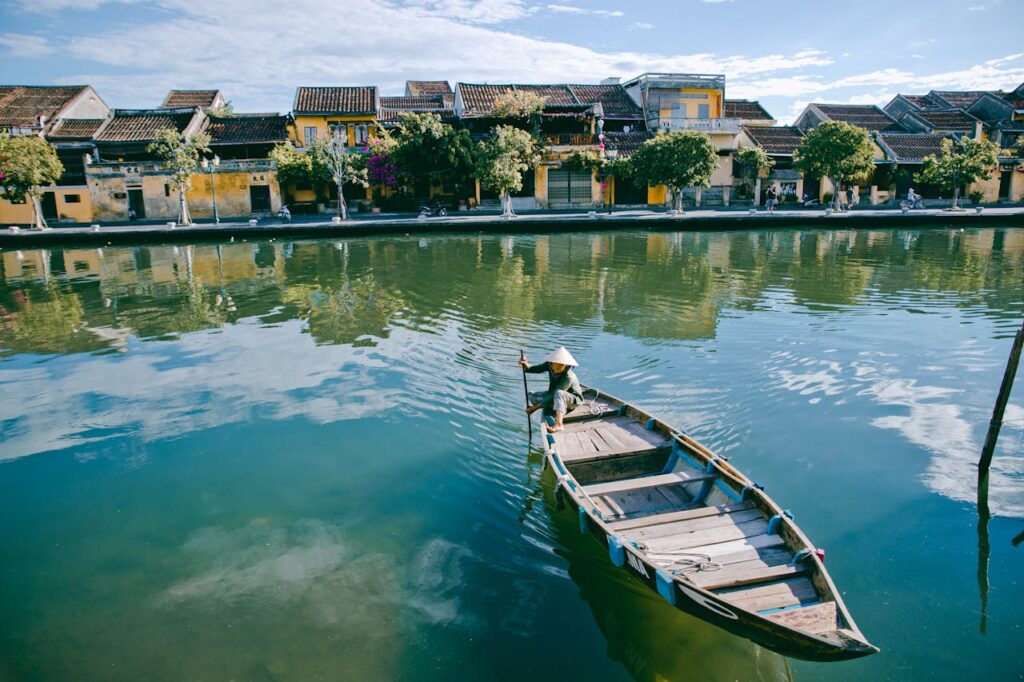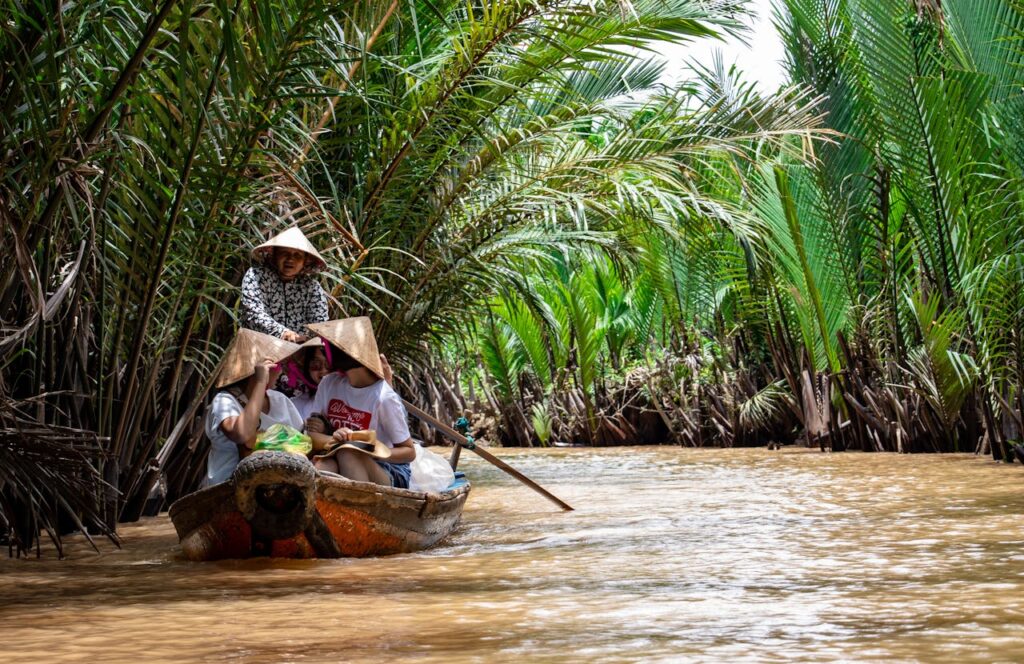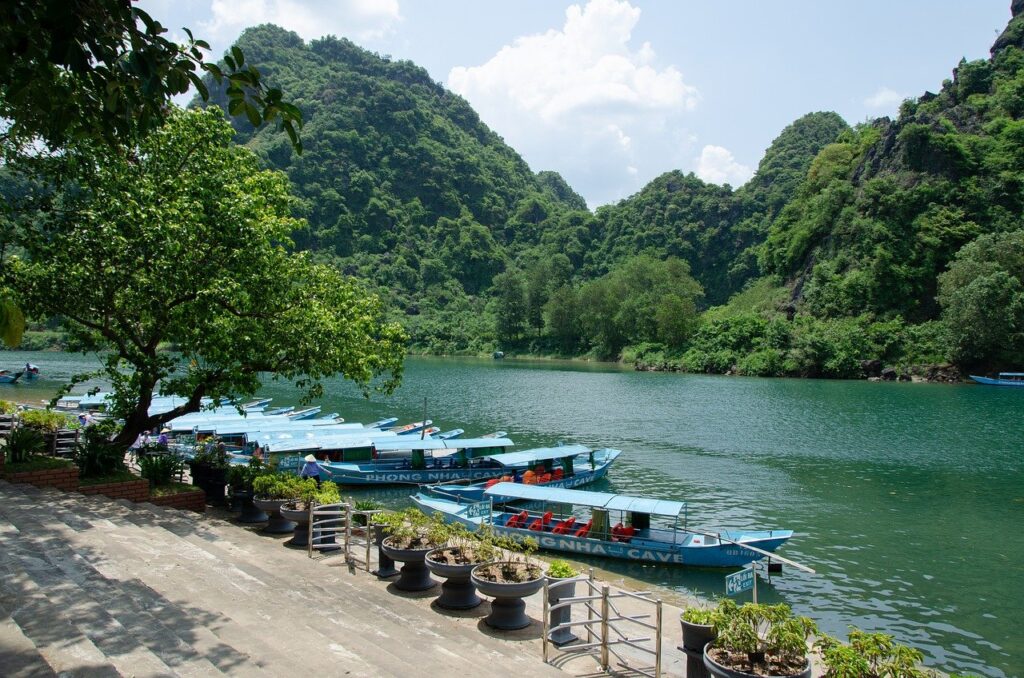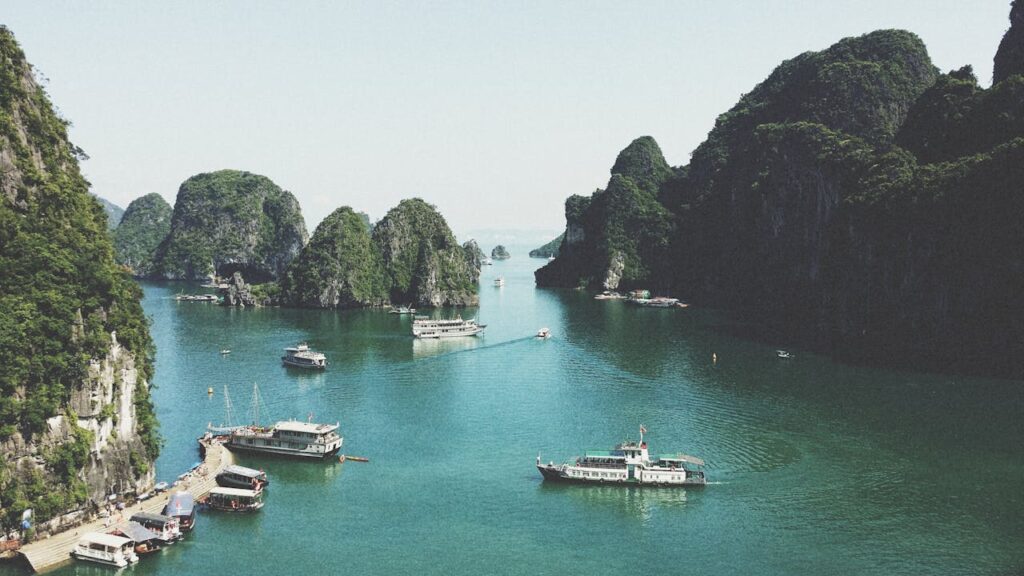Hanoi, the capital city of Vietnam, is a vibrant blend of old-world charm and modern dynamism. Known for its rich history, centuries-old architecture, and a unique blend of Southeast Asian, Chinese, and French influences, Hanoi offers a diverse range of attractions. From bustling markets and serene lakes to historic temples and museums, the city provides a captivating cultural experience. Here are some of the best places to visit in Hanoi, Vietnam:
Best Places to Visit
1. Old Quarter
Hanoi’s Old Quarter is the historic heart of the city, known for its narrow, winding streets, traditional shop houses, and bustling atmosphere. Each street in the Old Quarter is traditionally associated with a specific trade or craft, and today it remains a vibrant commercial hub. Visitors can explore the local markets, enjoy street food, and shop for souvenirs. The area is also home to numerous temples, pagodas, and colonial-era buildings, making it a fascinating place to explore.
- Key Attractions: Traditional shops, street food, colonial architecture.
- Activities: Shopping, dining, sightseeing.
- Location: Hoan Kiem District, Hanoi.
2. Hoan Kiem Lake and Ngoc Son Temple
Hoan Kiem Lake, located in the center of Hanoi, is a peaceful oasis and one of the city’s most iconic landmarks. The lake is associated with the legend of a magical sword given to Emperor Le Loi by a divine turtle, which he used to defeat the Chinese Ming Dynasty. The Turtle Tower (Tháp Rùa) stands on a small island in the lake, while the beautiful Ngoc Son Temple (Temple of the Jade Mountain) is situated on another island, connected by the iconic red-painted Huc Bridge. The lake is a popular spot for locals and tourists alike, offering a serene escape from the city’s hustle and bustle.
- Key Attractions: Ngoc Son Temple, Turtle Tower, Huc Bridge.
- Activities: Walking, photography, cultural exploration.
- Location: Hoan Kiem District, Hanoi.
3. Ho Chi Minh Mausoleum
The Ho Chi Minh Mausoleum is a monumental building in Ba Dinh Square, where the preserved body of Ho Chi Minh, the revolutionary leader and former president of Vietnam, lies in state. The mausoleum is a place of pilgrimage for many Vietnamese and an important historical site. Visitors can pay their respects and learn about Ho Chi Minh’s life and legacy. The mausoleum complex also includes the Ho Chi Minh Museum, which provides an in-depth look at his contributions to the country.
- Key Attractions: Ho Chi Minh’s preserved body, Ho Chi Minh Museum.
- Activities: Historical exploration, paying respects.
- Location: Ba Dinh District, Hanoi.
4. Temple of Literature (Văn Miếu)
The Temple of Literature, also known as Văn Miếu, is a historic temple dedicated to Confucius and is Vietnam’s first national university. Established in 1070, the temple is an excellent example of traditional Vietnamese architecture, with beautiful courtyards, gardens, and pavilions. The site includes the Well of Heavenly Clarity, the Stelae of Doctors, and the main sanctuary where Confucius and his disciples are worshipped. The Temple of Literature is a symbol of Vietnam’s rich academic and cultural heritage.
- Key Attractions: Traditional architecture, Stelae of Doctors.
- Activities: Cultural exploration, sightseeing.
- Location: Dong Da District, Hanoi.
5. Thang Long Imperial Citadel
The Thang Long Imperial Citadel is a UNESCO World Heritage Site and a symbol of Vietnam’s historical and cultural heritage. The citadel was the political center of the country for more than a thousand years and has witnessed many significant historical events. The site includes the Flag Tower of Hanoi, the Doan Mon gate, the Kinh Thien Palace, and various archaeological remains. The Imperial Citadel offers a glimpse into the grandeur and history of Vietnam’s past dynasties.
- Key Attractions: Flag Tower, Kinh Thien Palace, archaeological remains.
- Activities: Historical exploration, sightseeing.
- Location: Ba Dinh District, Hanoi.
6. Vietnam Museum of Ethnology
The Vietnam Museum of Ethnology is a museum dedicated to the 54 officially recognized ethnic groups in Vietnam. The museum features an extensive collection of artifacts, including traditional clothing, tools, musical instruments, and religious objects. The outdoor exhibition area showcases full-scale replicas of traditional houses from various ethnic groups. The museum provides valuable insights into the cultural diversity and traditions of Vietnam’s people.
- Key Attractions: Ethnographic exhibits, traditional houses.
- Activities: Cultural learning, museum exploration.
- Location: Cau Giay District, Hanoi.
7. Hanoi Opera House
The Hanoi Opera House is an architectural gem and a cultural landmark in the city. Built in 1911 during the French colonial period, the opera house features French neoclassical architecture with Italian Renaissance elements. The building is a venue for various cultural performances, including opera, ballet, classical music, and traditional Vietnamese arts. The Hanoi Opera House is a must-visit for those interested in the city’s cultural scene and architectural beauty.
- Key Attractions: French neoclassical architecture, cultural performances.
- Activities: Attending performances, sightseeing.
- Location: Hoan Kiem District, Hanoi.
Summary Table
| Place | Description | Key Attraction | Distance from City Center |
|---|---|---|---|
| Old Quarter | Historic district with traditional shops and markets | Street food, colonial architecture | Hoan Kiem District, Hanoi |
| Hoan Kiem Lake and Ngoc Son Temple | Iconic lake with a historic temple and tower | Ngoc Son Temple, Turtle Tower, Huc Bridge | Hoan Kiem District, Hanoi |
| Ho Chi Minh Mausoleum | Mausoleum housing Ho Chi Minh’s preserved body | Ho Chi Minh Museum, Ba Dinh Square | Ba Dinh District, Hanoi |
| Temple of Literature (Văn Miếu) | Historic temple dedicated to Confucius | Stelae of Doctors, traditional architecture | Dong Da District, Hanoi |
| Thang Long Imperial Citadel | UNESCO World Heritage Site with historical significance | Flag Tower, Kinh Thien Palace | Ba Dinh District, Hanoi |
| Vietnam Museum of Ethnology | Museum showcasing the cultural diversity of Vietnam | Ethnographic exhibits, traditional houses | Cau Giay District, Hanoi |
| Hanoi Opera House | French neoclassical opera house and cultural venue | Architectural beauty, cultural performances | Hoan Kiem District, Hanoi |
How to Reach Hanoi
By Plane
Noi Bai International Airport (HAN) is the main airport serving Hanoi, offering both domestic and international flights. The airport is located about 30 kilometers north of the city center. From the airport, travelers can take taxis, shuttle buses, or private transfers to their destinations.
By Train
Hanoi is connected to other major cities in Vietnam by train, with the main train station being Hanoi Railway Station. The Reunification Express runs from Hanoi to Ho Chi Minh City, offering scenic views of the country. The train station is centrally located, making it easy to access various parts of the city.
By Bus
Hanoi has several bus terminals, including My Dinh, Giap Bat, and Gia Lam, which serve routes to various destinations in Vietnam. Buses are an affordable and convenient way to travel to and from the city.
By Car
Visitors can rent a car or hire a private driver to explore Hanoi and its surrounding areas. The city’s road network is extensive, but traffic can be heavy, especially during peak hours.
Best Time to Visit Hanoi
The best time to visit Hanoi is during the spring (March to April) and autumn (September to November) when the weather is mild and pleasant. These periods are ideal for outdoor activities and sightseeing. The summer months (May to August) can be hot and humid, while the winter months (December to February) are cooler and can be misty.
Travel Tips
- Local Cuisine: Hanoi is renowned for its delicious street food and traditional Vietnamese dishes. Must-try dishes include pho (noodle soup), bun cha (grilled pork with noodles), and banh mi (Vietnamese sandwich). The city’s street vendors and local eateries offer a wide variety of flavors and culinary delights.
- Cultural Insights: Hanoi is a city with a rich cultural heritage and a blend of Vietnamese, Chinese, and French influences. When visiting religious sites, dress modestly and remove your shoes before entering. Respect local customs and traditions, and be mindful of cultural etiquette.
- Safety Tips: Hanoi is generally safe for tourists, but it’s important to take standard precautions. Keep personal belongings secure, especially in crowded areas and on public transportation. Be cautious when crossing the street, as traffic can be chaotic.
Itinerary Suggestions
One-Day Trip
- Morning: Start your day with a visit to the Ho Chi Minh Mausoleum and the Ho Chi Minh Museum. Afterward, explore the Temple of Literature and enjoy the serene atmosphere.
- Afternoon: Have lunch at a local restaurant, then visit the Old Quarter for shopping and exploring the traditional streets. In the afternoon, relax by Hoan Kiem Lake and visit the Ngoc Son Temple.
- Evening: End your day with a visit to the Hanoi Opera House, enjoying a cultural performance or simply admiring the building’s architecture. Have dinner at a nearby restaurant.
Weekend Getaway
- Day 1: Begin with visits to the Ho Chi Minh Mausoleum, Ho Chi Minh Museum, and the Temple of Literature. In the afternoon, explore the Thang Long Imperial Citadel and learn about Vietnam’s history. In the evening, enjoy the lively atmosphere of the Old Quarter.
- Day 2: Start with a morning visit to the Vietnam Museum of Ethnology to explore the country’s cultural diversity. In the afternoon, take a leisurely walk around Hoan Kiem Lake and visit the Ngoc Son Temple. Conclude your trip with a visit to the Hanoi Opera House and a dinner cruise on the Red River.
Hanoi’s rich cultural heritage, historical significance, and vibrant street life make it a captivating destination in Vietnam. Whether you’re exploring its ancient temples, experiencing its bustling markets, or enjoying its culinary delights, Hanoi offers a rich and memorable experience for all visitors.





